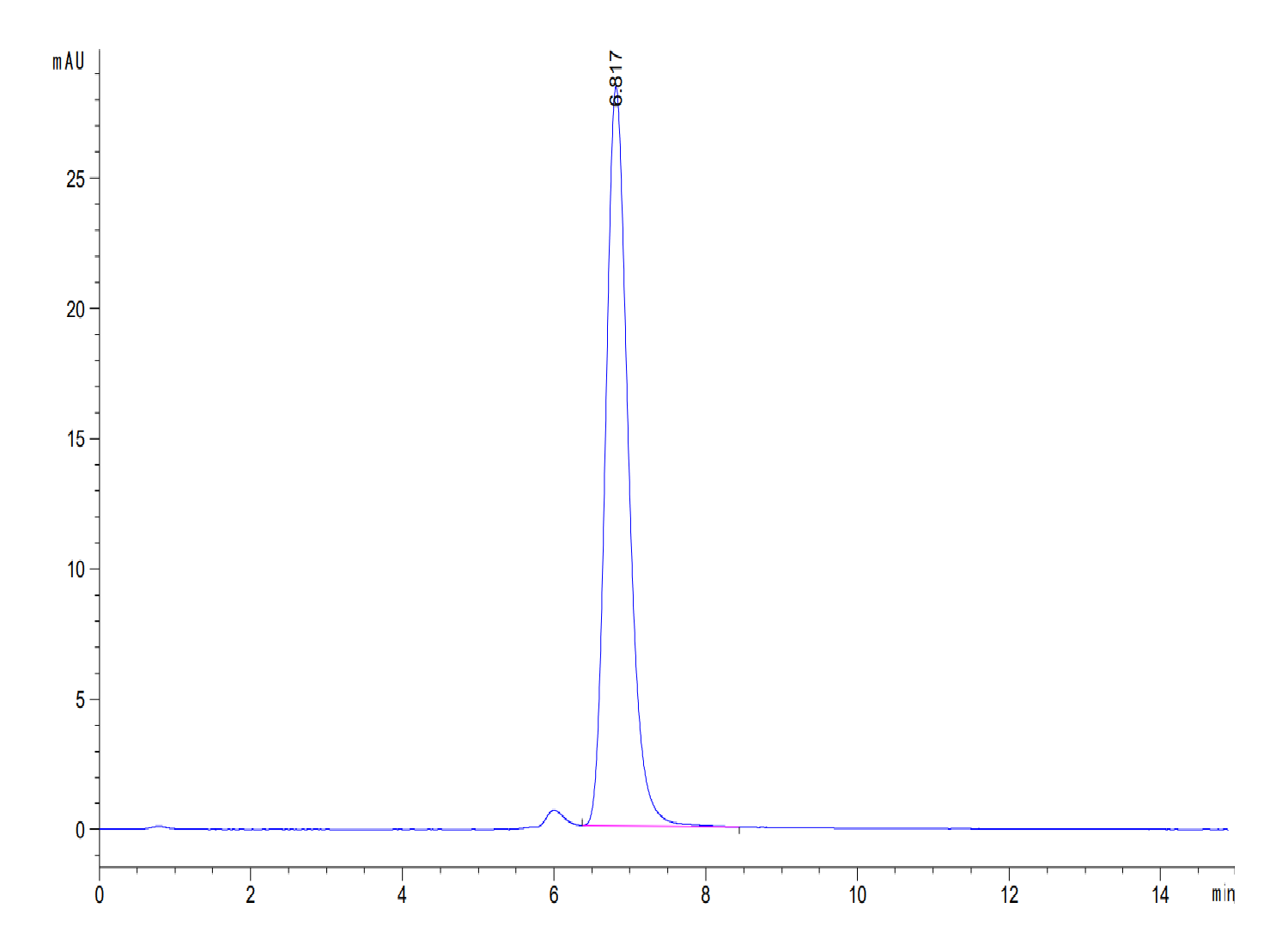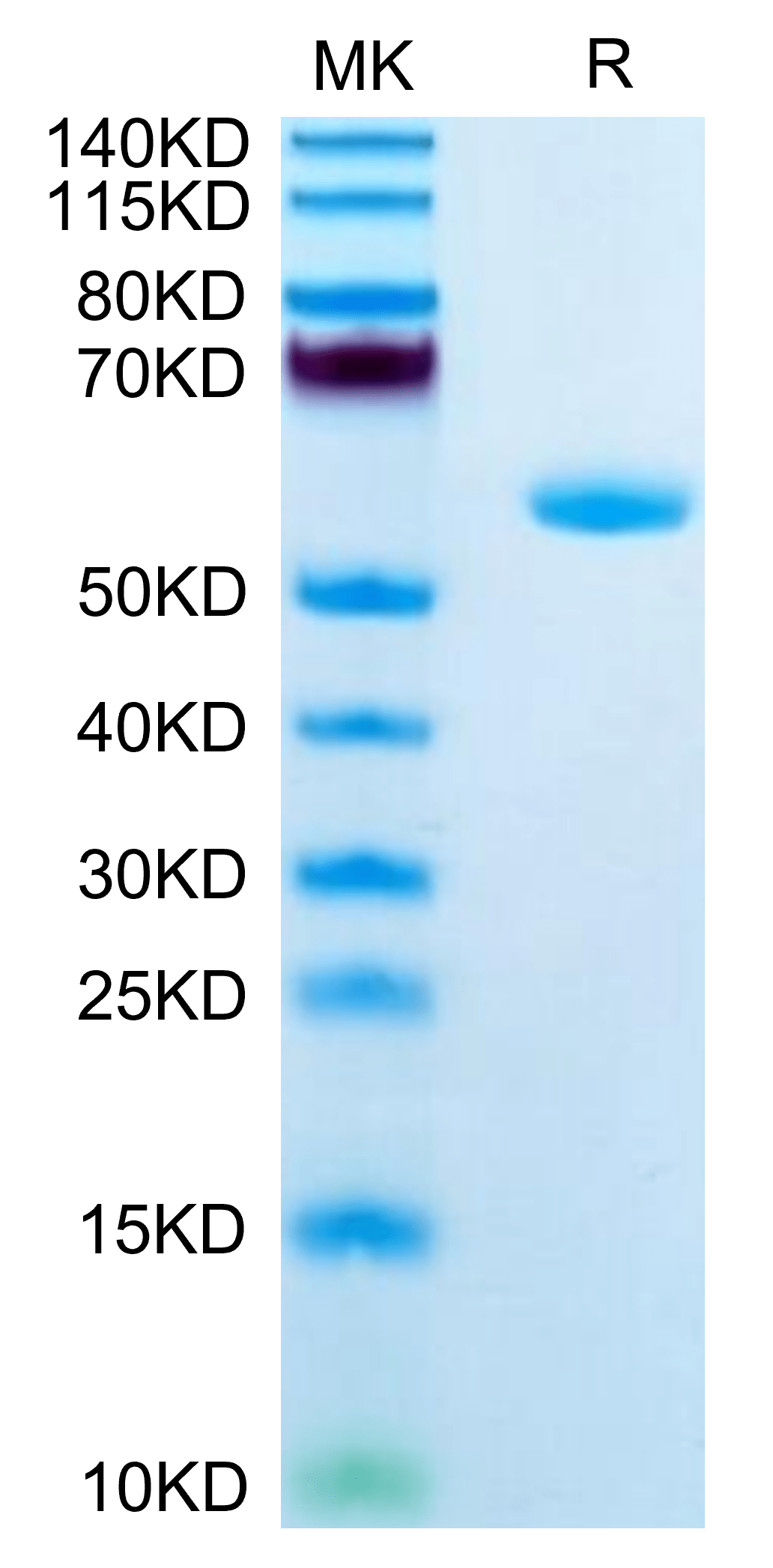| Weight | 1 lbs |
|---|---|
| Dimensions | 9 × 5 × 2 in |
| accession | P02647 |
| express system | HEK293 |
| product tag | C-hFc |
| purity | > 95% as determined by Tris-Bis PAGE;> 95% as determined by HPLC |
| background | Apolipoprotein A1 (ApoA1) is a main protein moiety in high-density lipoprotein (HDL) particles. Generally, ApoA1 and HDL are considered as atheroprotective. In prooxidant and inflammatory microenvironment in the vicinity to the atherosclerotic lesion, ApoA1/HDL are subjected to modification. The chemical modifications such as oxidation, nitration, etc result in altering native architecture of ApoA1 toward dysfunctionality and abnormality. |
| molecular weight | The protein has a predicted MW of 54.8 kDa. Due to glycosylation, the protein migrates to 55-65 kDa based on Tris-Bis PAGE result. |
| available size | 100 µg, 500 µg |
| endotoxin | Less than 1EU per μg by the LAL method. |
Human APOA1 Protein 3759
$285.00 – $950.00
Summary
- Expression: HEK293
- Pure: Yes (HPLC)
- Amino Acid Range: Asp25-Gln267
Human APOA1 Protein 3759
| protein |
|---|
| Size and concentration 100, 500µg and lyophilized |
| Form Lyophilized |
| Storage Instructions Valid for 12 months from date of receipt when stored at -80°C. Recommend to aliquot the protein into smaller quantities for optimal storage. Please minimize freeze-thaw cycles. |
| Storage buffer Shipped at ambient temperature. |
| Purity > 95% as determined by Tris-Bis PAGE |
| target relevance |
|---|
| Apolipoprotein A1 (ApoA1) is a main protein moiety in high-density lipoprotein (HDL) particles. Generally, ApoA1 and HDL are considered as atheroprotective. In prooxidant and inflammatory microenvironment in the vicinity to the atherosclerotic lesion, ApoA1/HDL are subjected to modification. The chemical modifications such as oxidation, nitration, etc result in altering native architecture of ApoA1 toward dysfunctionality and abnormality. |
| Protein names Apolipoprotein A-I (Apo-AI) (ApoA-I) (Apolipoprotein A1) [Cleaved into: Proapolipoprotein A-I (ProapoA-I); Truncated apolipoprotein A-I (Apolipoprotein A-I(1-242))] |
| Gene names APOA1,APOA1 |
| Protein family Apolipoprotein A1/A4/E family |
| Mass 9606Da |
| Function Participates in the reverse transport of cholesterol from tissues to the liver for excretion by promoting cholesterol efflux from tissues and by acting as a cofactor for the lecithin cholesterol acyltransferase (LCAT). As part of the SPAP complex, activates spermatozoa motility. |
| Subellular location Secreted. |
| Tissues Major protein of plasma HDL, also found in chylomicrons. Synthesized in the liver and small intestine. The oxidized form at Met-110 and Met-136 is increased in individuals with increased risk for coronary artery disease, such as in carrier of the eNOSa/b genotype and exposure to cigarette smoking. It is also present in increased levels in aortic lesions relative to native ApoA-I and increased levels are seen with increasing severity of disease. |
| Structure Homodimer (By similarity). Interacts with NAXE and CLU (PubMed:11991719, PubMed:1742316). Component of a sperm activating protein complex (SPAP), consisting of APOA1, an immunoglobulin heavy chain, an immunoglobulin light chain and albumin (PubMed:1909888). Interacts with NDRG1 (PubMed:15922294). Interacts with SCGB3A2 (PubMed:12847263). Interacts with NAXE and YJEFN3 (PubMed:23719382). |
| Post-translational modification Glycosylated.; Palmitoylated.; Phosphorylation sites are present in the extracellular medium. |
| Target Relevance information above includes information from UniProt accession: P02647 |
| The UniProt Consortium |
Data
 |
| The purity of Human APOA1 is greater than 95% as determined by SEC-HPLC. |
 |
| Human APOA1 on Tris-Bis PAGE under reduced condition. The purity is greater than 95%. |
Publications
Publications
| pmid | title | authors | citation |
|---|---|---|---|
| We haven't added any publications to our database yet. | |||
Protocols
| relevant to this product |
|---|
Documents
| # | ||
|---|---|---|
| Please enter your product and batch number here to retrieve product datasheet, SDS, and QC information. | ||














